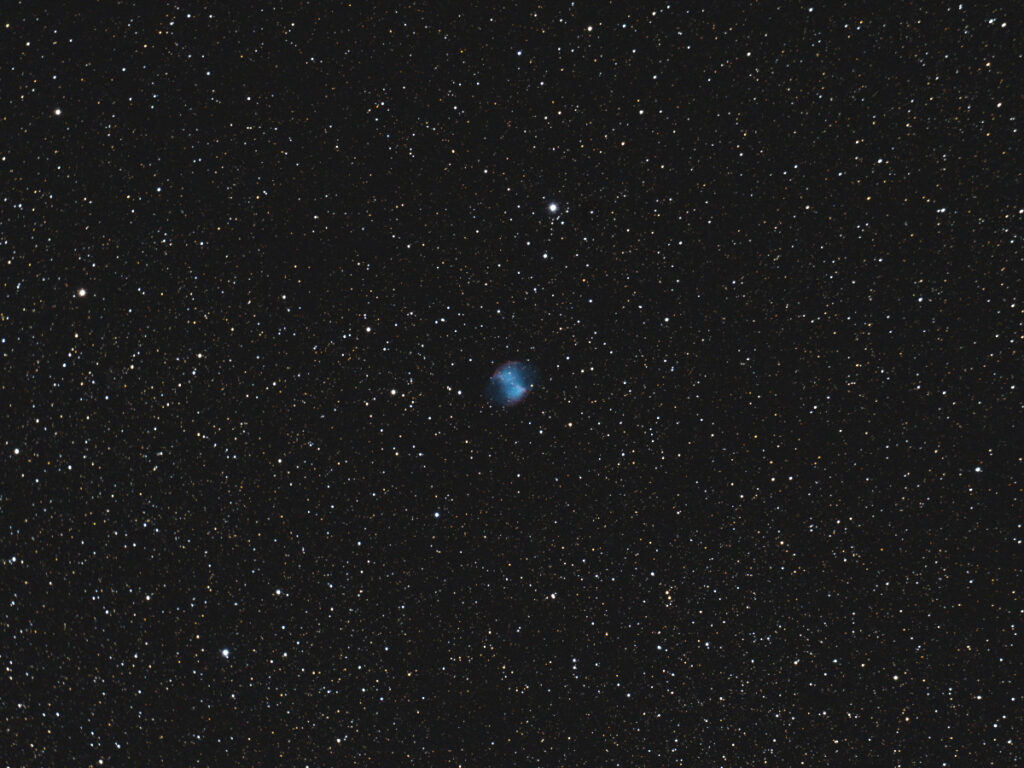
Telescope: ES Comet Hunter MN6 at f/4.8, Orion Atlas EQ-G
Camera: Baader modified Nikon 610
Filter: High Point 2” IR Blocking Filter
Guide scope: Williams Optics 50mm, ASI290MM mini, PHD
Exposure: 18x60sec, ISO 200, saved as RAW
Darks: Internal (Long Exposure Noise Reduction On)
Flats: 32×1/4sec, tee shirt flats taken at dusk
Average Light Pollution: Red zone, Bortle 8, poor transparency
Lensed Sky Quality Meter: 18.4 mag/arc-sec^2
Stacking: Mean with a 2-sigma clip.
White Balance: Nebulosity Automatic
Software: Backyard Nikon, Nebulosity, Deep Sky Stacker, Photoshop
M27, the Dumbbell nebula, is an expanding shell of gas that was ejected from a sun-like star as it exhausted its hydrogen fuel. Swollen into a red giant, the star shed its outer shell while its core collapsed into a white dwarf. Fierce UV radiation from the collapsed core sets the surrounds gas aglow with the blue/green light of doubly ionized oxygen. The diameter of the nebula is about 1 light-year with an estimated age of 9,800 years. Located between Sagitta and Cygnus, M27 is fairly easy to find with a small telescope. Visually, it shows two lobes connected by a neck of nebulosity, giving the nebula its characteristic dumbbell shape.
M27 is currently a morning object rising after midnight and is high in the east at dawn.
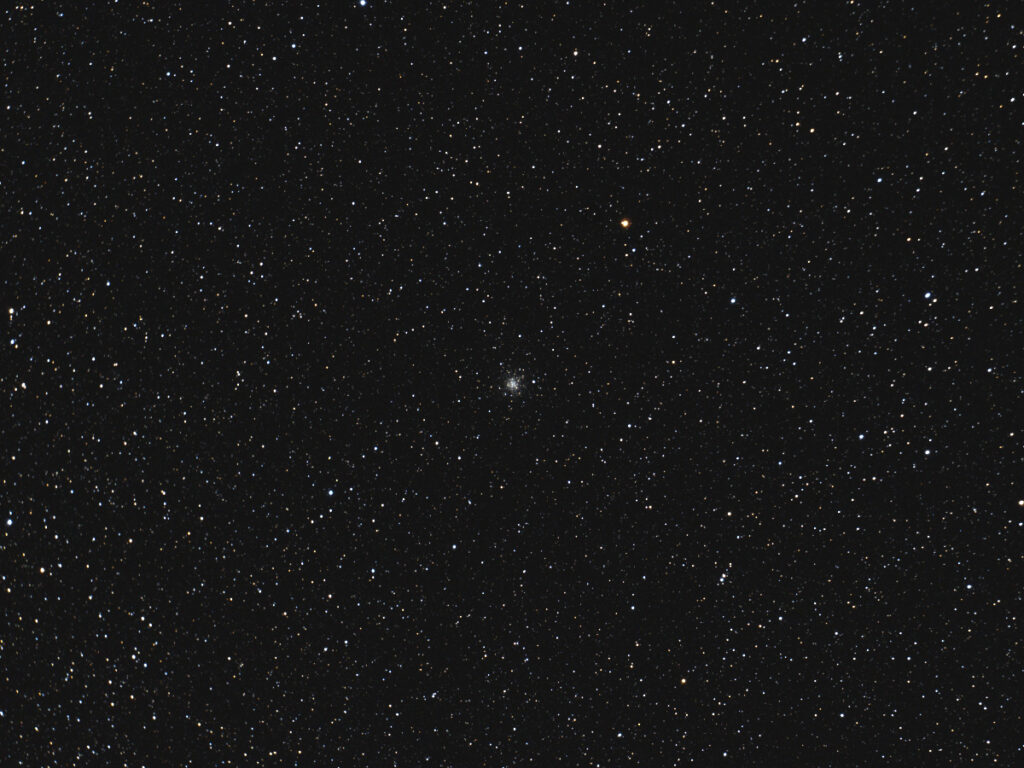
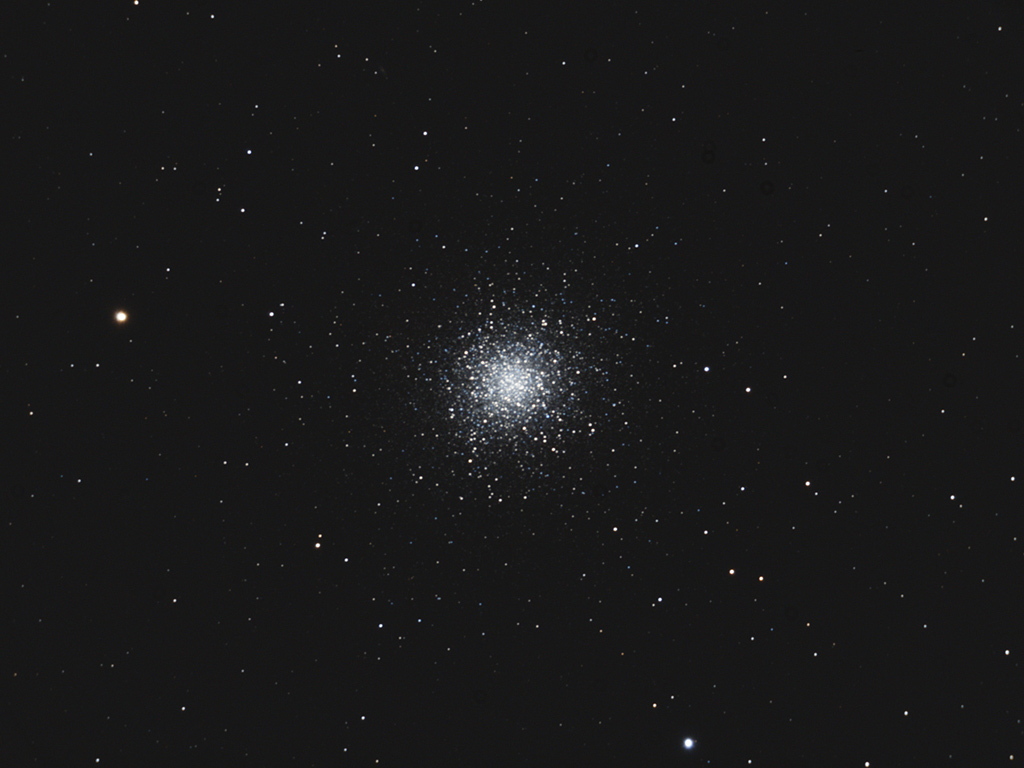


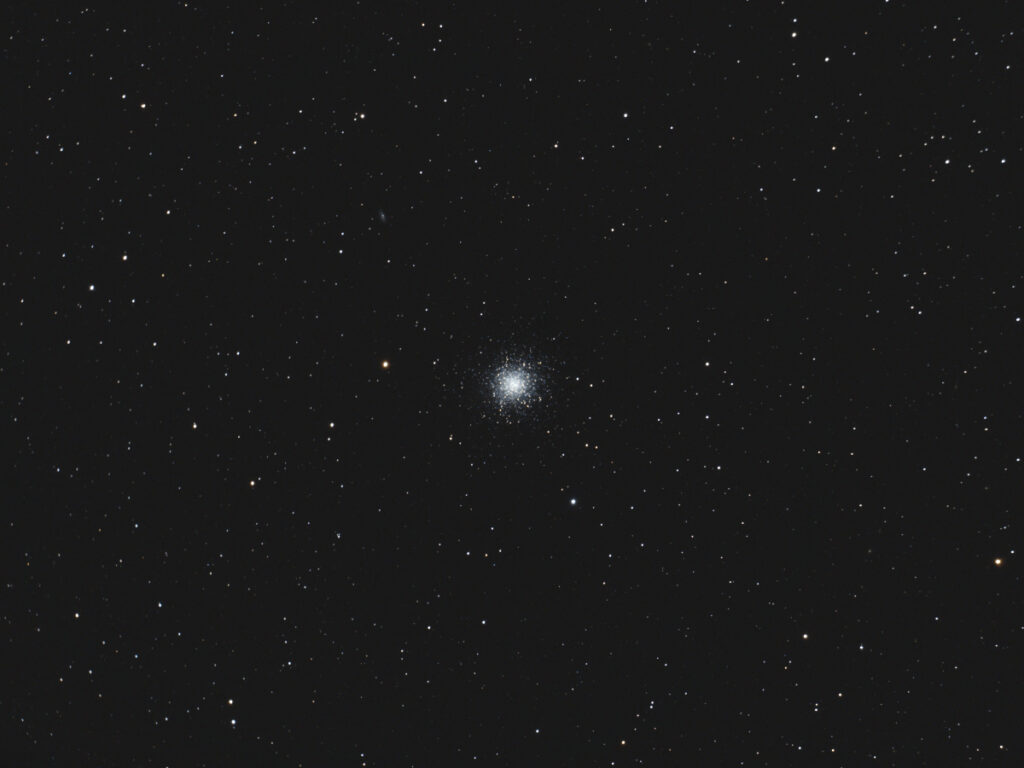
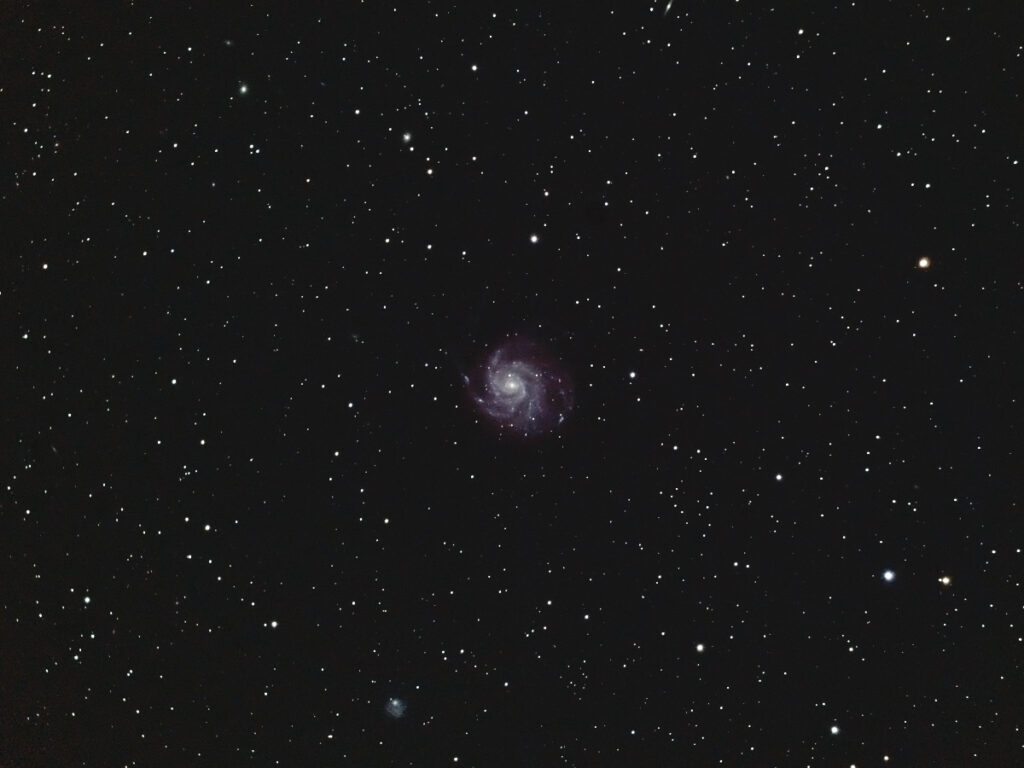
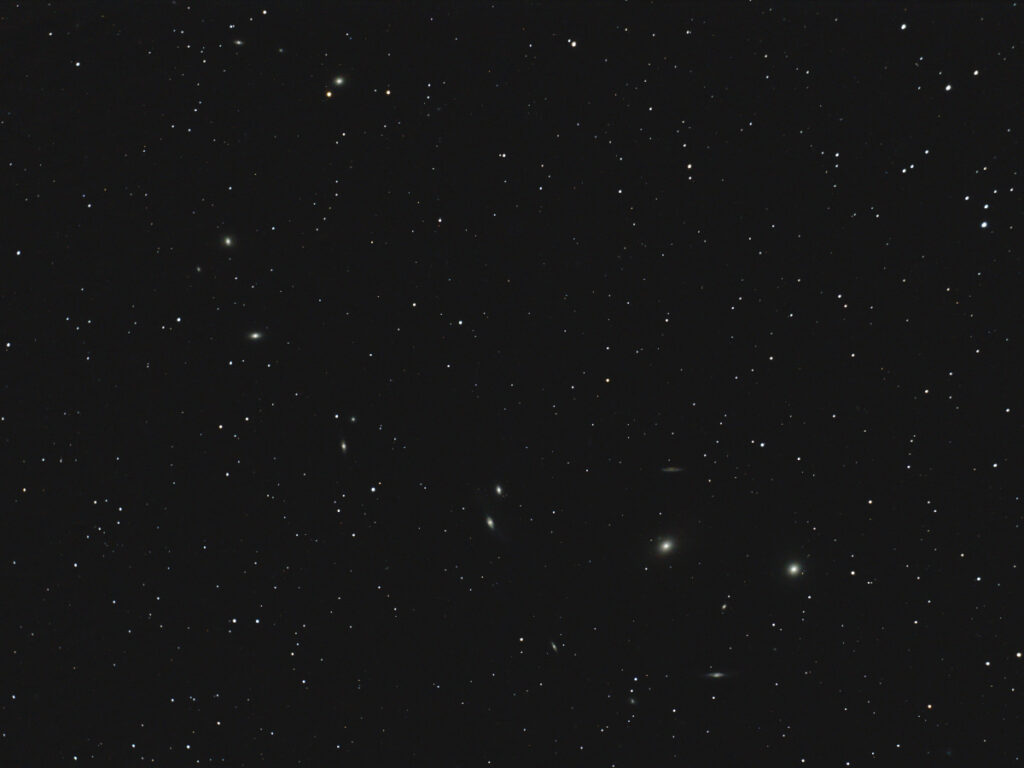
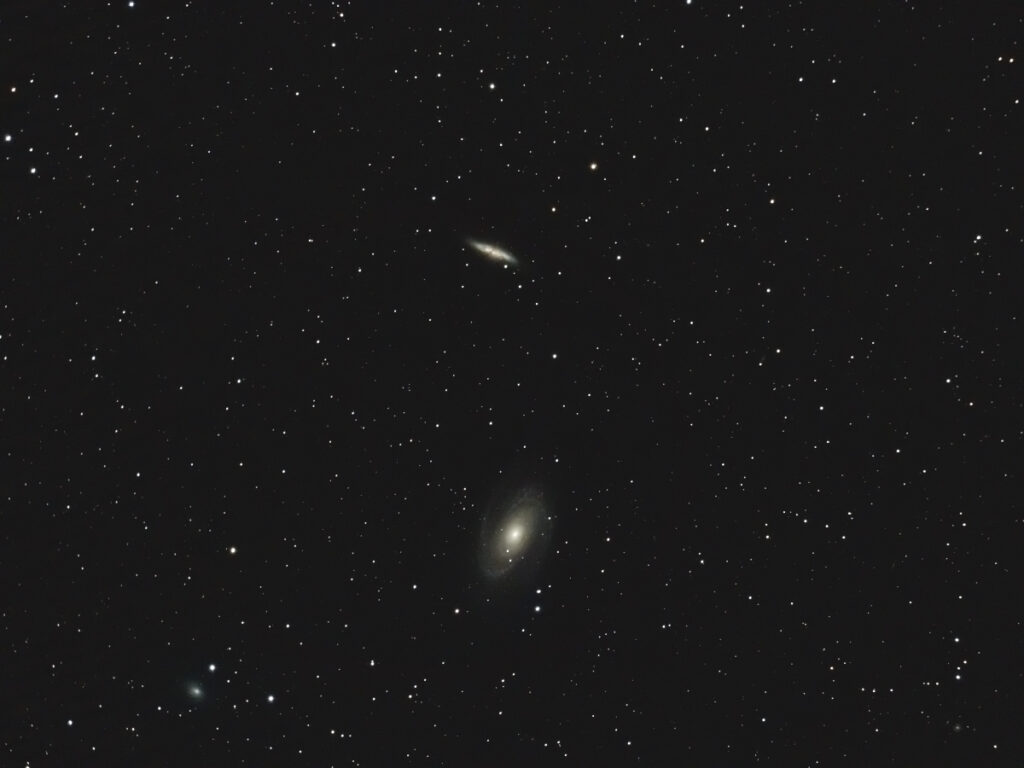
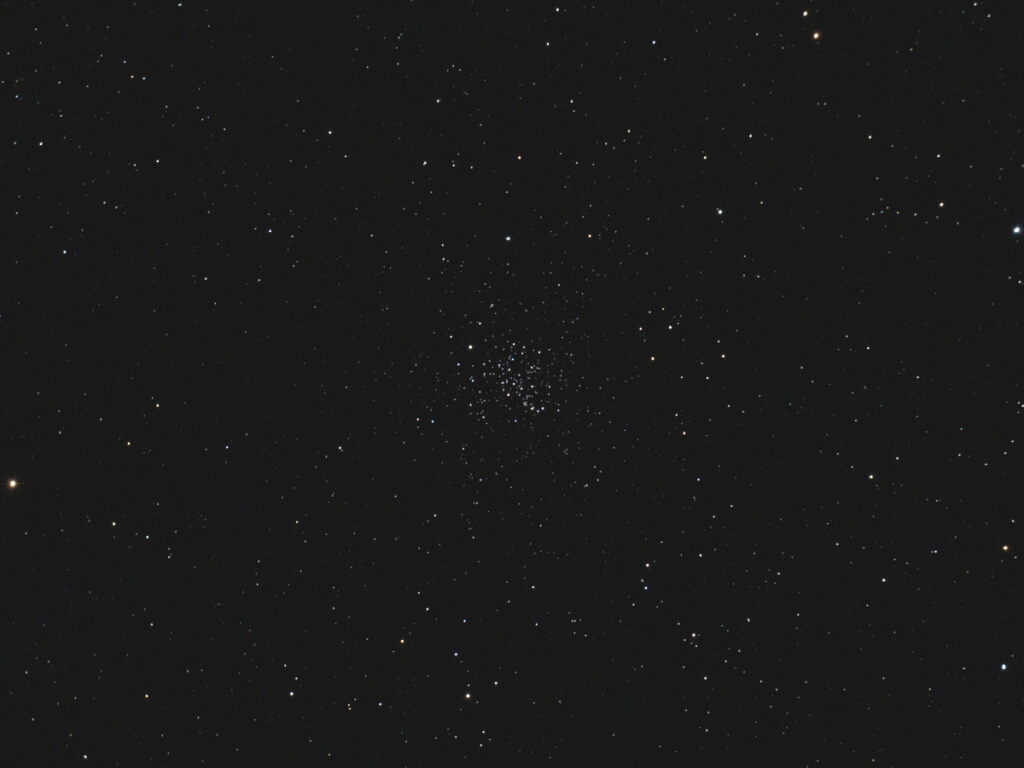
Recent Comments